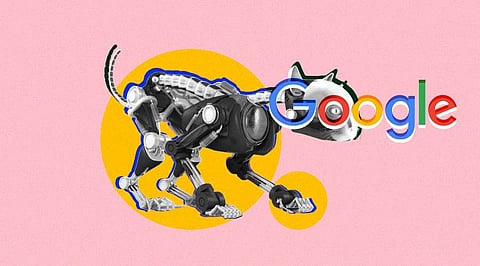Google DeepMind’s RoboCat: A New Era of Robotics
RoboCat is an AI agent by Google DeepMind that can perform diverse tasks.
Robots are becoming more prevalent in our daily lives, as they are often designed to excel at performing certain activities. What if machines can learn a variety of activities and develop over time? That is the goal of Google DeepMind, the research organization that developed ground-breaking AI programs like AlphaGo and AlphaFold. Their most recent invention, the RoboCat, is a self-improving artificial intelligence agent for robotics that can operate a variety of robotic arms.
RoboCat is a new AI model from Google DeepMind that can operate several types of robotic arms and execute various jobs. The first agent that can handle various jobs and adapt to them across various real robots is called RoboCat. It picks up new tasks with as few as 100 demos and learns far more quickly than other cutting-edge models.
A vast and varied dataset of images and activities gathered from virtual and actual robots was the basis for RoboCat's training. The data showed examples of various activities, including picking and arranging objects, putting constructions together, and avoiding obstacles. RoboCat could generalize from this data and learn new activities even when the tasks were completed.
Robotics could undergo a revolution thanks to RoboCat's capacity to learn quickly and adapt to new tasks. Robots have conventionally been designed to carry out a single duty, making learning new duties challenging. Robots may become more versatile and adaptable due to RoboCat's capacity to learn new tasks after only a few demos. It has a broad range of potential uses and will probably significantly influence how we interact with robots in the future. RoboCat may usher in a new era of robotics by making robots more practical, effective, and approachable.
Beyond its helpful uses, the RoboCat is an intriguing illustration of the fusion of technology and biology. The movements of actual cats were used as a model by the robot's creators, who also studied their anatomy and behavior to make the contraption as lifelike as possible.
However, there are worries about the RoboCat's possible effects, as with any new technology. Some people are concerned that as robots develop, they may start replacing workers, resulting in job losses and other economic issues. Others caution against using robots like the RoboCat for bad things like spying or combat.
Join our WhatsApp Channel to get the latest news, exclusives and videos on WhatsApp
_____________
Disclaimer: Analytics Insight does not provide financial advice or guidance. Also note that the cryptocurrencies mentioned/listed on the website could potentially be scams, i.e. designed to induce you to invest financial resources that may be lost forever and not be recoverable once investments are made. You are responsible for conducting your own research (DYOR) before making any investments. Read more here.
.png)

